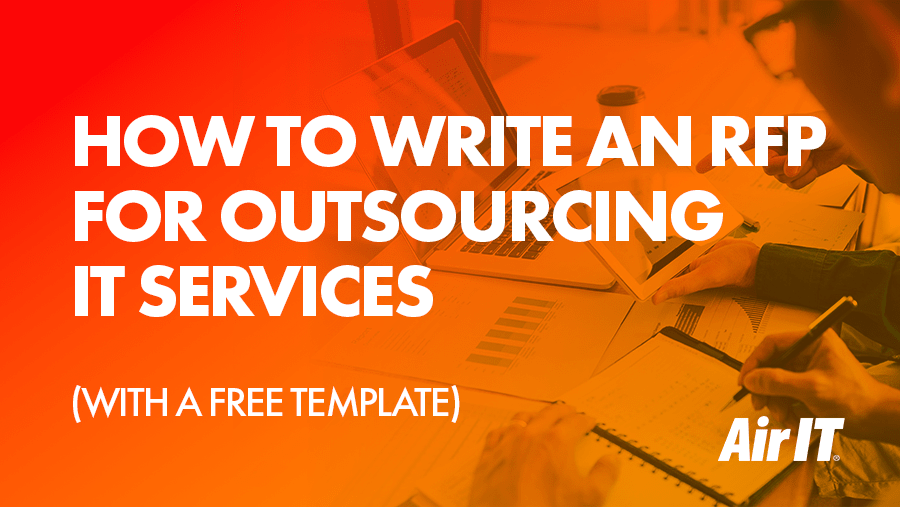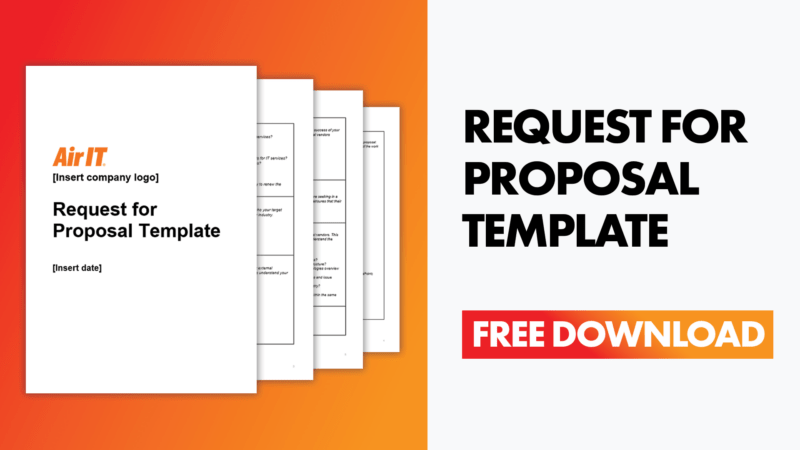When outsourcing IT services, the abundance of options can be overwhelming. That’s where issuing an RFP comes in. Discover what an RFP is, when and why you might use one, and the steps to kickstart the process. Download a free template to get started.

In the ever-changing technological landscape, finding the right IT provider to manage your IT needs is crucial. By issuing a Request for Proposal (RFP), or tender, organisations can articulate their IT needs and expectations, providing potential service providers with a clear understanding of the project needs while ensuring transparency and effective communication.
Navigating an RFP can be a daunting task. To simplify this process, we’ve outlined the framework for evaluating different suppliers, enabling your organisation to access capabilities, pricing models, and alignment with your IT goals.
What is a Request for Proposal?
A Request for Proposal (RFP) is a document that outlines the requirements and expectations for a project or service that an organisation requires. It’s typically used to invite bids from potential vendors or service providers, allowing the organisation to evaluate proposals and select the best-suited provider for their needs.
Benefits of writing a Request for Proposal
When considering outsourcing your IT services, you don’t always have to issue an RFP. However, if you want to explore different solutions or find providers that align better with your requirements, an RFP can be a valuable tool. A few of the benefits of writing an RFP include:
- Selecting high-quality suppliers: A well-structured RFP with carefully considered selection criteria connects you with quality outsourcing partners.
- Compare costs: With an RFP, you can collect proposals from multiple vendors, enabling you to compare pricing structures whilst ensuring you get the best value for your investment.
- Clarity of vision: The RFP process can help you better understand your business needs. It helps you consider your needs from an IT service provider, allowing you to allocate resources more effectively. It can also help you make better decisions.
- Better decision-making: The RFP process can help you efficiently evaluate and compare proposals, allowing for a more structured and informed decision-making process.
- Improved communication: Writing an RFP allows you to communicate your needs effectively to prospective partners. It ensures that both parties have a clear understanding of expectations, deliverables, and timelines.
How do I write an RFP for outsourcing IT services?
Here are 6 essential steps to consider to ensure a comprehensive and effective document:
- Step 1: Details of your company: Provide an overview of your company, including its history, mission, and core values. Describe your industry, target market, and any challenges or opportunities you face. Include information about your organisational structure, key stakeholders, and decision-making process. This part explains to potential vendors your business goals and how IT outsourcing fits into your overall strategy.
- Step 2: Pricing & payment schedule: Clearly outline your budget for the IT services you require and specify the payment schedule. Whether you have a fixed budget or flexibility, transparency is key. Detail any potential additional costs or contingencies that may arise during the project. Providing clarity on pricing and payment expectations upfront helps vendors tailor their proposals accordingly and ensures alignment.
- Step 3: Overview of the current IT environment: Providing an overview of your current IT setup and what brings you to seek external assistance from IT providers can help potential vendors understand your existing infrastructure, systems, and challenges.
- Step 4: IT requirements & scope of work: Detail the specific IT services you require, and the scope of work involved. This can include areas such as managed cloud services, cyber security, communications, or IT support. Be as specific as possible to ensure potential vendors understand your needs accurately.
- Step 5: Current barriers or roadblocks: Identify any existing challenges or limitations within your IT environment that you need to address. This could include issues like outdated technology, limited internal resources, or compliance concerns. Understanding these obstacles will help vendors propose appropriate solutions.
- Step 6: Evaluation & selection criteria: Clearly define the attributes and qualities you seek in an IT provider. This might include factors like responsiveness, communication skills, scalability, and alignment with your company culture. Establish criteria for evaluating proposals and selecting the most suitable vendor, such as references, case studies, or demonstration of previous success.
Download a free RFP template for outsourcing IT services
Navigating an RFP can be a daunting task. To simplify this process, we’ve outlined the framework for evaluating different suppliers, enabling your organisation to access capabilities, pricing models, and alignment with your IT goals.
Download our ready-to-use template to get started.




